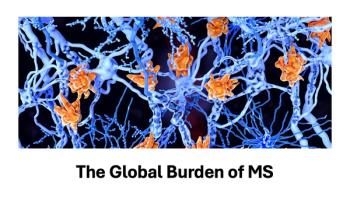
What billions in lost pharma revenue means for managed care
Pharmaceutical manufacturer relationships and next-gen value based contracts are primed to accelerate value-derivation from your drug spend.
In November CapGemini and HealthPrize Technologies updated the forward to a reissued 2012
Lead authors Katrina Firlik, MD, and Thomas Forissier go on to state, "Interventions to improve medication adherence should be top priority for the pharmaceutical industry and will prove beneficial to all stakeholders. Increasing adherence rates by only 10 percentage points would translate into a $41 billion pharmaceutical revenue opportunity in the U.S. ($124 billion globally), accompanied by improved health outcomes and decreased healthcare spending."
Alignment among every member of the healthcare continuum is more important than ever in order to ensure better use of limited resources. The first generation of value-based pharmaceutical contracts between manufacturers and payers were meaningful intent but were not designed to produce real value-based change. As I
Placing the patient at the center of every conversation and looking beyond the disease or the symptoms to uncover other barriers to medication adherence and improved health outcomes are the cornerstones on which we build programs that improve adherence, outcomes and lives. What other medications are involved? What are their side-effect implications and how can clinical pharmacists mitigate them? What elements of a patient’s lifestyle and level of education are likely to present impediments to adherence and how to we remove barriers like cost, access to care or need for further education? This is difficult and labor intensive, but we do so every day because we know it is an absolute requirement to improve outcomes, lives and reduce the overall healthcare spend for the most costly to treat, chronically ill patients.
Demonstration of efficacy in real-world conditions, along with provision of supplemental patient support services will be high level priorities for manufacturers in the very near future. Considering aforementioned $41 billion revenue opportunity by increasing adherence rates by 10% and what we hear from payers, manufacturers and chronically ill patients every day, we know with great certainty that high levels of adherence are the demand for additional patient support services among manufacturers is high.
This presents a golden opportunity for managed care executives to leverage the manufacturers’ needs into risk-based contracts that improve stakeholder alignment, patient adherence, acquisition of real-world data on efficacy, value-derivation and improved outcomes across the board.
- Include adherence measures in joint wellness programs. There is a massive opportunity to develop joint wellness programs between managed care organizations and pharmaceutical manufacturers with significant focus on medication adherence for patients with chronic conditions as a critical component. Reduction of the chronic condition medication nonadherence gap by one-tenth would lead to better clinical outcomes, a decline in healthcare spending and increased patient benefits while netting manufacturers billions in additional revenue.
- Ensure inclusion and engagement of resources, including clinical pharmacists and patient support services teams, proven to improve adherence and outcomes in at-risk contracts. These resources provide insights into the patient living room that are inaccessible to payers whose visibility ends at the payment of the prescription.
- Assign a neutral manager to oversee this process. There is too much at stake for both payers and manufacturers to fairly assign and measure outcomes metrics for value-based at-risk contracts, let alone adjudicate them amongst themselves. Clinical pharmacists are the nearest neutral party with the pharmacological expertise to evaluate clinical outcomes-assuming the drugs in question are not part of a limited or exclusive distribution agreement or are the only drug on formulary.
We see no reason to believe the shift from fee-for-service to value-based care will slow down in the short to near term, and it will likely accelerate. Managed care executives have a phenomenal opportunity before them to turn a previously adversarial relationship into one of mutual benefit and smarter allocation of scarce resources by implementing at-risk contracts with pharmaceutical manufacturers that support and reward high levels of detailed, data-driven adherence, efficacy and outcomes improvement.
O’Connor is chief operating officer for
Newsletter
Get the latest industry news, event updates, and more from Managed healthcare Executive.






















































